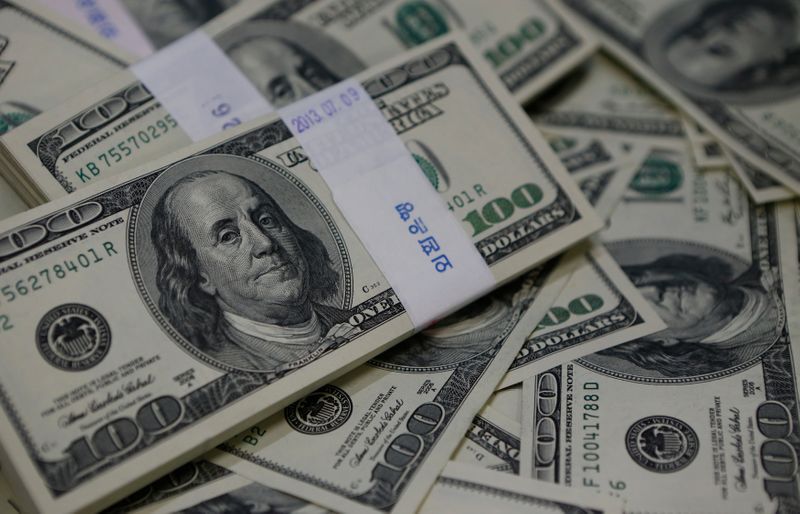By Stanley White
TOKYO (Reuters) - The dollar held near a two-week high versus the yen on Friday on upbeat U.S. economic data ahead of a key jobs report, while the yuan eased and financial markets remained on tenterhooks as the death toll from a new coronavirus in China jumped yet again.
Sterling traded near a six-week low against the greenback and nursed losses versus the euro, dogged by persistent worries about negotiations between Britain and the European union for a post-Brexit trade deal.
Recent upbeat U.S. economic data and China's stimulus steps gave traders some respite from heightened concerns about the new virus, though the uncertainty about the impact of the epidemic on global growth looks set to keep most investors risk-averse - at least in the short run.
"There is a perception that the U.S. economy will be less affected by the virus than China or other countries, so that is a factor for dollar strength," said Masafumi Yamamoto, chief currency strategist at Mizuho Securities in Tokyo.
"Risk-off trades could take a break because we won't know the true state of China's economy until we see data for February. There could be some big declines in the numbers for China and other Asian countries."
The dollar traded at 109.97 yen on Friday in Asia, just below a two-week high hit earlier. For the week, the dollar was on course for a 1.5% increase versus the yen, which would be its biggest weekly gain since July 2018.
In the onshore market, the yuan fell 0.1% to 6.9796 per dollar. For the week, the onshore yuan fell 0.6% as Chinese financial markets took a battering after resuming trade on Monday following an extended Lunar New Year holiday.
In contrast, the offshore yuan was on course for a 0.3% gain this week, supported by central bank stimulus and Thursday's surprise Chinese announcement of tariff cuts on U.S. imports.
For now, the focus has shifted to the closely-watched U.S. nonfarm payrolls report due later on Friday, which is forecast to show job creation accelerated in January.
The mood for the dollar improved on Thursday after unemployment benefits dropped to a nine-month low and worker productivity rose.
Data earlier this week showing a rebound in U.S. manufacturing had also boosted the dollar's fortunes.
The U.S. optimism contrasts starkly with the jitters in Asia as investors count the human toll of the virus and try to measure how travel restrictions and business closures will impact activity in the world's second-largest economy.
The yen and the Swiss franc, two currencies sought as safe-havens, initially gained as the coronavirus epidemic unfolded last month, but both currencies reversed course this week.
Against the dollar, the Swiss franc traded at 0.9743, headed for its biggest weekly decline since November 2019.
Sterling found itself on the backfoot as concerns about Britain's relationship with the EU following its exit from the bloc returned.
Investors are nervous that British Prime Minister Boris Johnson is taking a hard line in trade talks with the EU, which need to conclude before the end of the year to avoid a potentially disruptive break in trading relations.
The pound was little changed at $1.2938, close to the lowest since Dec. 25 and down 2% for the week.
Sterling (EURGBP=D3) traded at 84.97 pence per euro, on course for a 1.1% weekly decline.
The Australian dollar fell 0.22% to $0.6717 after the Reserve Bank of Australia slashed growth forecasts in its quarterly economic outlook due to bushfires and the coronavirus.
The Aussie was still on course for its first weekly gain in six weeks, supported by the RBA earlier in the week raising the hurdle to further rate cuts.
